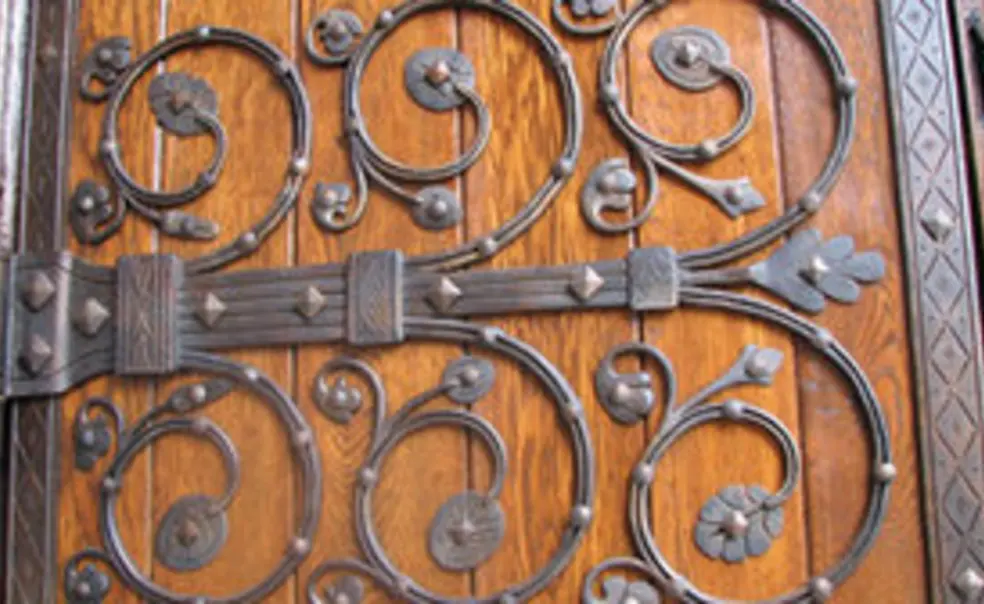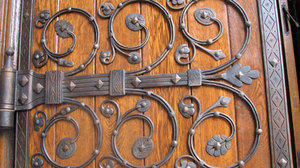Chapel doors receive a makeover, thanks to fire code
Aesthetics of the University Chapel have benefited as the result of an unlikely state mandate: new fire codes for exiting buildings.
Black paint had obscured the beauty of the hardware on the University Chapel doors, designed by renowned blacksmith Samuel Yellin. (Fran Hulette/PAW)
As part of an ongoing program to bring its older building into compliance with newer fire safety regulations, the University recently replaced the Chapel’s five pairs of side doors with new doors that accommodate push bars for exiting, fitted the interior front doors with automatic opening devices, and installed lighted exit signs. Additionally, the building’s 11-foot-tall front doors and their elaborate decorative hardware were restored.
According to Dan Casey, coordinating architect from the Office of the University Architect, state requirements potentially meant clunky hardware and lots of wires, but care was taken to minimize visual impact. “We wanted not to harm the experience of going through the building,” Casey said.
Though salvaging the side doors was investigated, they ultimately were replaced because they were not solid oak. New doors are identical to the old ones in appearance but feature push (or panic) bars, while other operating mechanisms are concealed. Interior front doors received pneumatic devices that automatically open the doors when the fire alarm goes off. Since the outer front doors are always open when the Chapel is in use, opening devices were not needed.
Black paint applied to the massive front doors over the years obscured the beauty of the hardware designed by renowned blacksmith Samuel Yellin. A team of craftsmen removed the doors and hardware, stripping and refinishing the wrought iron as well as the wood. The result reveals Yellin’s rich finishing process in which hints of gold and copper are visible in the wrought iron.
During the past year, Yellin hardware at the Graduate College has been restored with the same amount of care, and the University continues to bring older facilities into state compliance while preserving their beauty and historic significance.
“When you are charged with the care of a campus like Princeton’s, you have to go the extra mile,” Casey said.












No responses yet